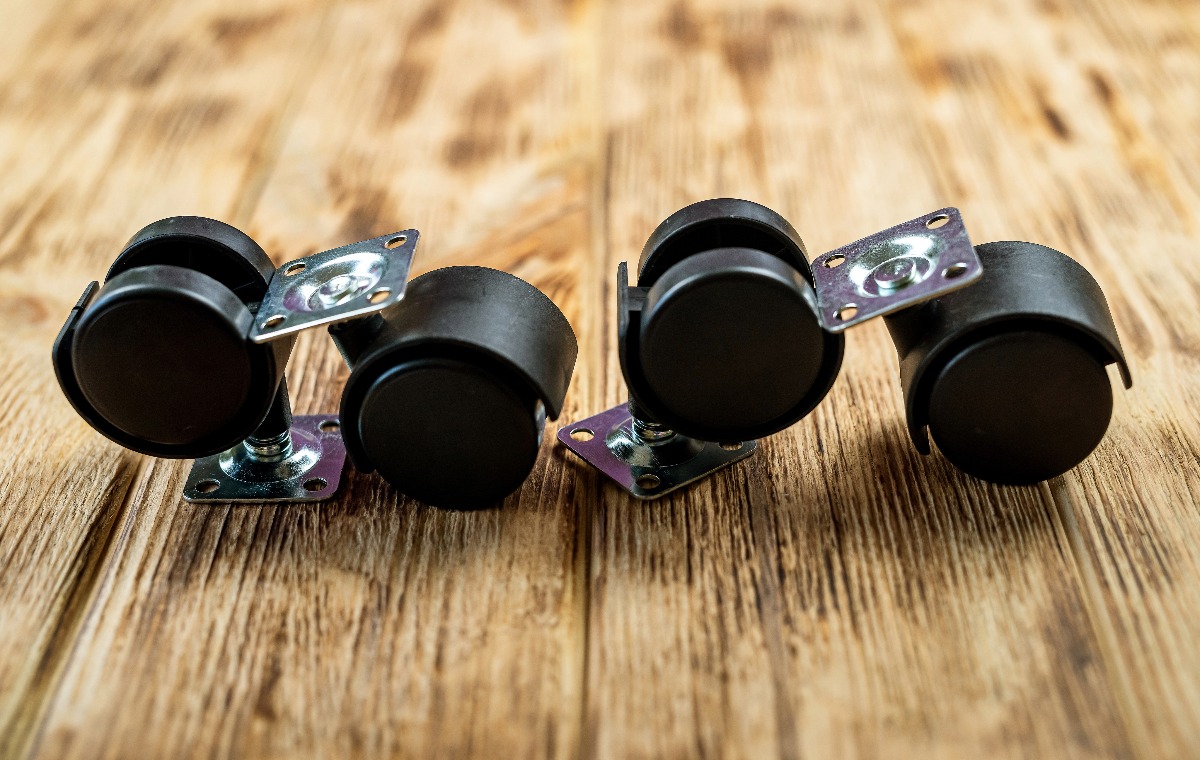Selecting the right caster wheels for your equipment is crucial for ensuring efficiency, safety, and ease of movement in various environments. Whether you’re outfitting industrial machinery, office furniture, or medical equipment, the right caster can significantly improve performance and longevity. We will explore the key considerations and factors to help you decide when choosing caster wheels for your specific needs.
Understanding Load Capacity
One of the primary considerations when selecting caster wheels is understanding the load capacity. Load capacity refers to the maximum weight a caster wheel can support without compromising performance. Calculating the total weight of the equipment and the load it will carry is essential to ensure you choose a caster that can handle the combined weight. Overloading a caster wheel can lead to premature wear, damage, or failure, posing safety risks and potential downtime. For instance, if equipment weighs 200 pounds and requires four caster wheels, each caster must support at least 50 pounds. However, it’s wise to add a safety margin to account for uneven weight distribution or unexpected loads. Buy caster wheels from Caster Central. Selecting caster wheels with a higher load capacity than the minimum requirement can provide additional assurance of durability and performance.
Considering Wheel Material
The material of the caster wheel is another crucial factor that affects its performance and suitability for different environments. Common materials include rubber, polyurethane, nylon, steel, and cast iron. Each material has distinct properties that make it more suitable for specific applications. Rubber caster wheels are ideal for absorbing shocks and providing a smooth, quiet ride, making them perfect for environments where noise reduction is essential, such as hospitals or offices. Polyurethane wheels offer excellent durability and resistance to chemicals, making them suitable for industrial settings with harsh conditions. Nylon wheels are known for their strength and resistance to wear, making them ideal for heavy-duty applications. Steel and cast iron wheels are highly durable and can handle very high loads, but they may not be suitable for delicate flooring as they can cause damage. Evaluating your equipment’s environment and specific requirements will guide you in choosing the suitable wheel material.
Considering Wheel Size
Wheel size plays a significant role in the performance of caster wheels. Larger wheels generally provide better maneuverability and can roll over obstacles faster than smaller wheels. They are also less likely to get stuck in cracks or on debris, making them suitable for outdoor or uneven surfaces. On the other hand, smaller wheels offer lower profiles and are more appropriate for indoor use where space constraints are a concern. The diameter of the wheel also affects the load capacity, with larger wheels typically supporting more weight.
Additionally, larger wheels reduce the effort required to move heavy equipment, reducing strain on the user. When choosing the wheel size, consider the typical operating environment, the surface conditions, and the physical space where the equipment will be used. Balancing these factors will help you select a wheel size that enhances the performance and usability of your equipment.
Evaluating Tread Type
The type of tread on a caster wheel influences its grip, maneuverability, and impact on flooring. Tread options include flat, crowned, and tapered. Flat tread wheels provide a larger contact area with the ground, distributing weight more evenly and reducing floor damage. They offer good stability and are suitable for indoor use on smooth surfaces. Crowned tread wheels have a slightly rounded surface, reducing rolling resistance and enhancing maneuverability. These wheels are ideal for applications requiring frequent directional changes, such as carts or dollies. Tapered tread wheels have a cone-shaped profile that provides excellent traction and prevents slipping, making them suitable for wet or slippery environments. The choice of tread type should be based on the specific requirements of your equipment and the environment in which it will operate. Assessing the surface conditions, frequency of use, and required maneuverability will guide you in selecting the appropriate tread type.
Considering Mounting Options
How caster wheels are mounted to equipment affects their stability, performance, and ease of installation. Various mounting options include plate, stem, and bolt-hole mounts. Plate mounts involve a flat plate bolted to the equipment, providing a secure and stable attachment. This option is suitable for heavy-duty applications where stability is crucial. Stem mounts involve a single rod that inserts into a corresponding hole in the equipment, offering a more straightforward and often more flexible installation. This option is commonly used for lighter equipment or furniture. Bolt-hole mounts combine elements of both plate and stem mounts, offering a secure attachment with the flexibility of adjustable positioning. When choosing a mounting option, consider the type of equipment, the required stability, and the ease of installation. Selecting the appropriate mounting method ensures a secure and reliable attachment of the caster wheels to your equipment.
Choosing the right caster wheels for your equipment involves considering several critical factors, including load capacity, wheel material, wheel size, tread type, and mounting options. Each element is crucial in determining the caster wheels’ performance, durability, and suitability for your specific application. By carefully evaluating your equipment’s requirements and the environment in which it will be used, you can make an informed decision that enhances efficiency, safety, and movement. Investing time in selecting the appropriate caster wheels will ultimately lead to improved performance and longevity of your equipment.
Keep an eye for more news & updates on Internal Insider!










